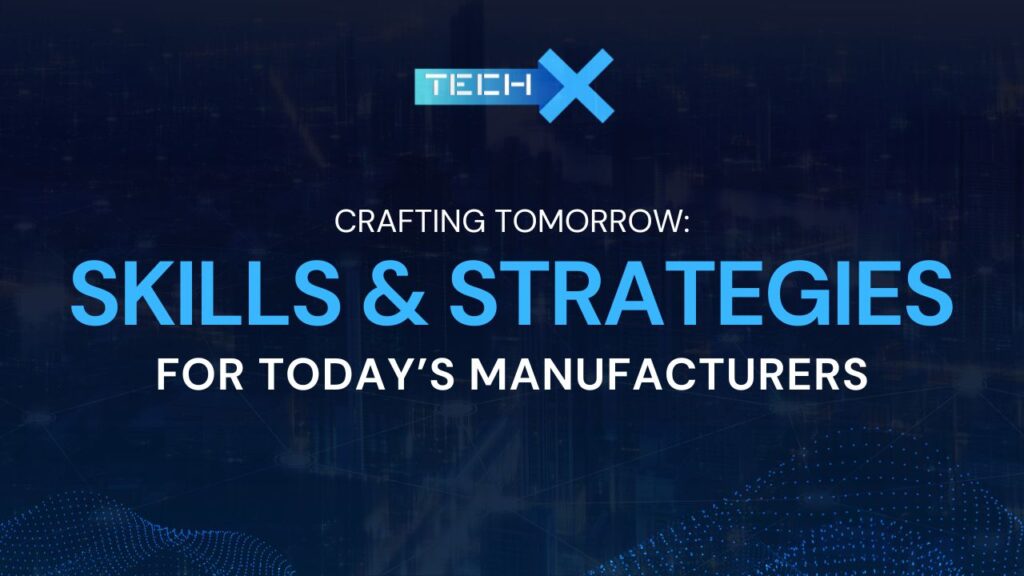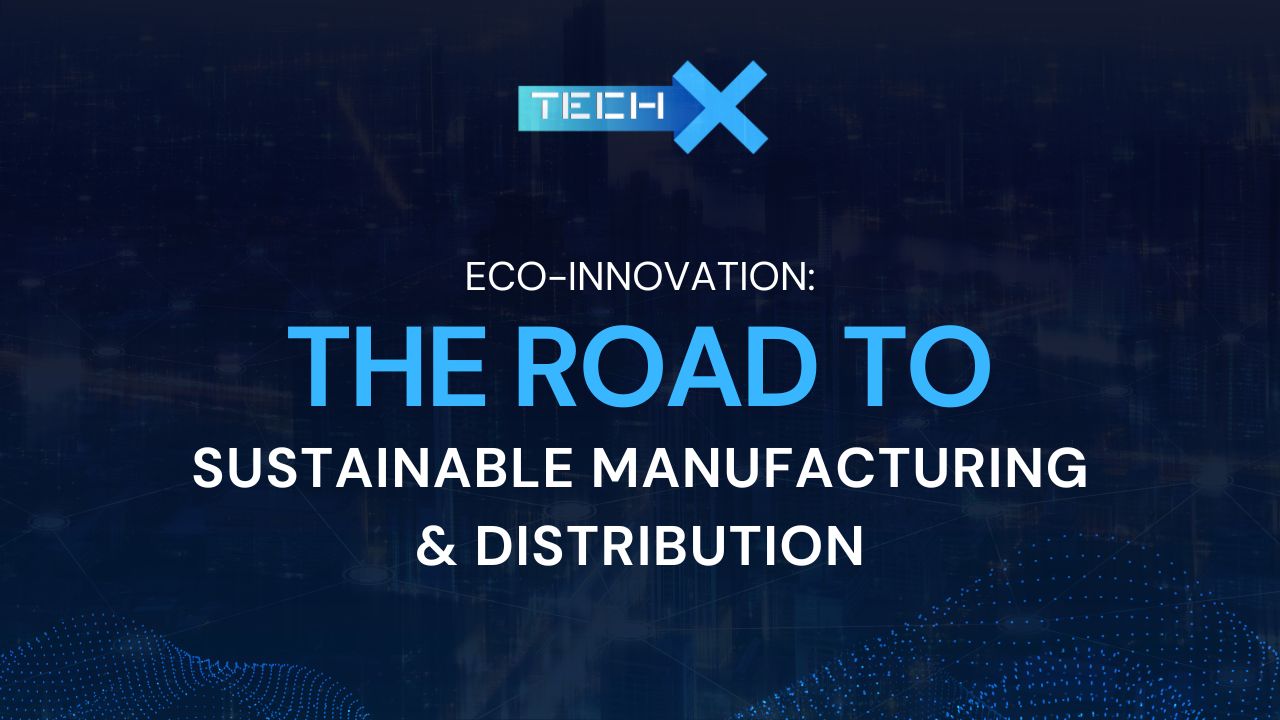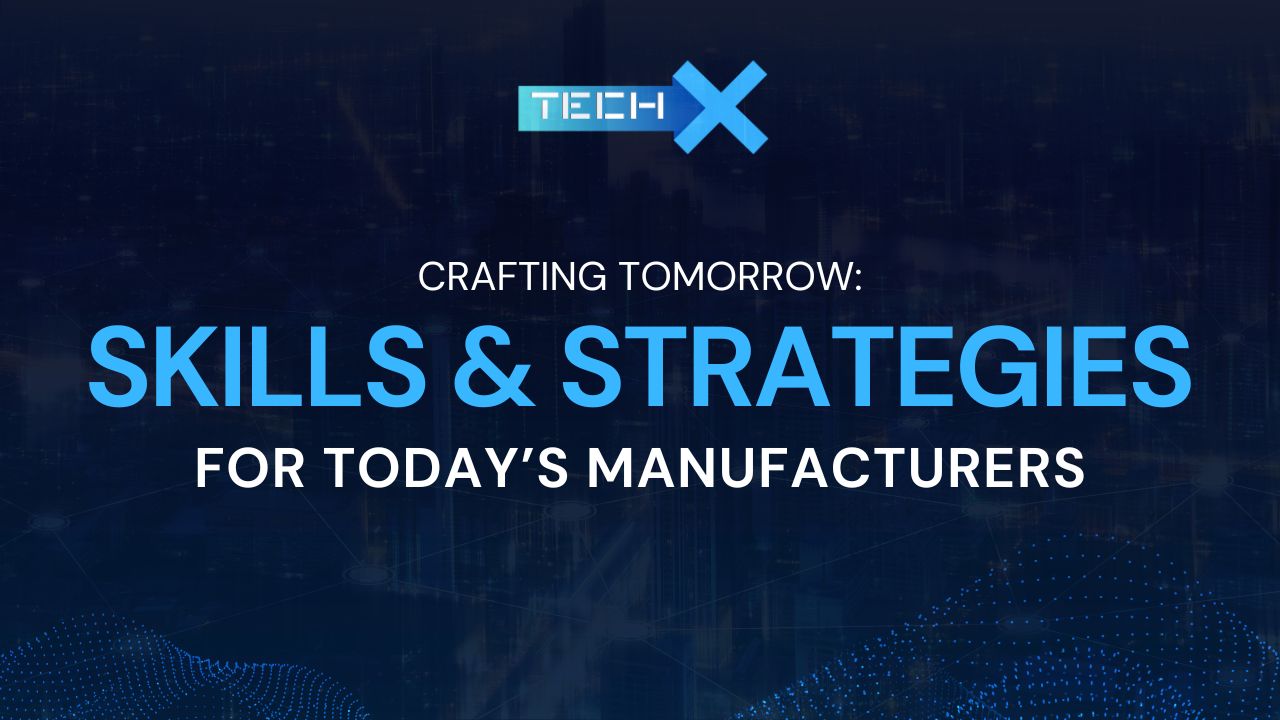Show Notes
Dive into the future of manufacturing and distribution with the second episode of the TechX Podcast, where host Seth Waters is joined by Merritt DeGraw, the visionary Chief Technology Officer at Fortuna. Together, they unravel the complexities of integrating cutting-edge technologies into traditional industries, and into the strategies companies can employ to embrace automation without being overwhelmed by its complexities. Through Merritt’s extensive experience in sectors ranging from public space and internet to medical devices, this episode shines a light on the pivotal role of automation, machine learning, and computer vision. Discover the essential skills that today’s workforce needs to develop to stay ahead in an ever-evolving landscape, and how these technologies are not just altering the way we work, but also the very nature of work itself.
Topics Discussed
- The impact of technology across different business sectors
- Discussion on emerging technologies and their implementation in the manufacturing and distribution sectors
- Skill development in the manufacturing sector
- Importance of automation, machine learning, and computer vision in modern manufacturing
- The role of education in navigating the adoption of new technologies
- Leadership and cultural shifts in the face of rapid technological advancements
Quotes
“Workers have to be skilled up to be able to facilitate… they’re becoming more of a governance versus a doer.”
Merritt DeGraw
“Educate yourself…Understand what’s out there.”
Merritt DeGraw on embracing automation
“Not everybody is going to fit in the new world… find people with the aptitude that really want to understand, want to move that needle forward.”
Merritt DeGraw
“Keep an open mind… things are going to move fast and you’ve got to be comfortable with that move.”
Merritt DeGraw on leadership in the era of automation
“If you don’t innovate, then you’re going to be left behind.”
Merritt DeGraw on the importance of embracing change
Transcript
Advertisement: This episode is brought to you by Fortuna, an IT consulting and staffing company. From contact centers to IT and managed staffing services, Fortuna helps businesses “grow thru simplicity.” Learn more at gofortuna.com.
Seth Waters: Well, welcome back to the TechX podcast. My name is Seth Waters. I’m the Chief Marketing Officer at Fortuna, and I’m here again today with Merritt DeGraw. And you met Merritt last time we were together. He is the Chief Technology Officer at Fortuna as well as Planned Capacity and a bunch of other places. Before we jump in, I’d love for you just to highlight again some of the places you’ve been in the past few years.
Merritt DeGraw: Yeah. No, again, I worked in public space with Cubic, I’ve worked at Internet space, SAAS-based stuff with a few companies and medical device company tech, NuVasive Inc., Akamai Technologies, a small little startup, SAAS, that did air medical, air emergency medical response and tracking for health helicopters and medical billing so that I’ve dealt with a multitude of different industries and different compliance components also.
Seth Waters: Okay. So you’ve been around and had lots of experiences that have shaped you.
Merritt DeGraw: Yes.
Seth Waters: Well, we’re excited to learn from you today. And, you know, on the TechX podcast, we talk about where technology is intersecting different areas of business. And we are in this series right now talking about the intersection of technology and manufacturing and distribution. And last time we were together, we kicked off this series talking about some of the new technologies that are emerging and some of the things that are in the face right now of manufacturing and distribution, and we’re going to be jumping in the next few series in that during these next 12 months, we’ll be talking about where technology intersects with the new space, where it intersects with energy, where it intersects with health care. I’m really excited about that.
But let’s continue our conversation from last time, focusing on the manufacturing and distribution industry. Today, I want to talk really pushing on skill development and workplace culture leadership when it comes to technology in manufacturing and distribution. So, let’s dive in. Let’s talk about skill development. What skills are currently in high demand in the technology area when it comes to manufacturing and how can workers develop them?
Merritt DeGraw: You know, it’s one of the big ones or I should say. I think we alluded to it in the previous podcast, but automation is a big factor in all sort of space. We’re talking from a robot programmer, a robot to go do something right.
Seth Waters: Yeah.
Merritt DeGraw: Versus using AI to kind of tie in and do some of those elements also, right? So machine learning, computer vision, right? Those are all elements that you’re starting to see where, you know, again, I wouldn’t say replacing workers, but workers have to be skilled up to be able to facilitate, right? A welder doing a well job needs to understand how to program a cobot to be able to do that same weld, right? Right. So that way you could, you know, kind of expand the capabilities of that person, right? So they’re becoming more of a governance versus a doer. Right, again, it’s nothing, nothing wrong. I think there’s still welders out there. And I’m not saying it’s going away, but I think for you to be able to handle some of the throughput, you’re not going to be able to find enough welders, which is one of the big challenges is, you know, a lot of the blue collar jobs are not, you know, there’s not a lot of people going into them as much as they are. So, there’s a shortage in those areas nowadays. So again, really driving the ability to multiply the multipliers, if you want to call it their capabilities through using cobots and robots to be able to do some of that work.
Seth Waters: That’s interesting. We’ve been having conversations recently with different distribution leaders that are that are having conversations with big companies and owners of manufacturing companies, and they’re asking these questions about automation. How do we jump in? How do we start to use this in our systems? And the things that we’re getting is a lot of people are feeling kind of overwhelmed right now of falling behind, right? And they don’t want to fall behind, but they don’t really know where to start when it comes to this industry – to manufacturing and distribution. Where can leaders start?
Merritt DeGraw: You know, again, one, educate yourself is the big factor, right? Understand what’s out there. Understand because there’s a multitude of different people out there that are pitching solutions for these areas. So really understand what is, you know, start to understand the market, understand how things are progressing in the market and make sure that you’re, you know, maybe if you have a trusted advisor internally or external trusted advisor to be able to help you through the minutia, because there’s a lot of it out there, right? There’s different groups saying, “Hey, we’ve solved all things world hunger, you name it,” right? Ultimately, yeah. Again, I would say it depends on your organization, depends on the people you have internally, because it may work at one organization, but there is no one size fits all solution to any organization out there. So, I mean, again, 80/20 rule, maybe apply some places where, you know, it’ll cover 80% of the things and 20% are outliers, right, that you’ve got to worry about.
But I think for the most part is really understanding the market, understanding it, get that trusted advisor, whether it be internal or external. Again, we’ve seen it both ways where they have an internal advisor and we kind of, you know have a solution that bolts on and or it’s “Hey look we need really help on the strategy side of this conversation,” right? Because the internal folks are still thinking they haven’t expanded the horizon yet so they’re not thinking outside the box. They’re thinking this is how we’ve done it, or this is how I’ve seen it done, or this is how my vendors tell me how to do it. But ultimately, understanding how it fits in your organization. Because ultimately, how many failures have we seen with ERPs, MRPs in the conversations we’re having with these executives where there is a failure problem, primarily because you don’t understand the problem or that problem may not be something you need to solve in this organization, but it’s over there. So ultimately, it’s really understanding how the technology can fit in your organization and adapt accordingly.
Seth Waters: Adapt accordingly – I know this is something that you’re very passionate about in your role at Fortuna, and this is something we do for companies. I encourage you, if you’re in a company or you’re looking for a solution, we offer in that advisory capacity to come alongside and assess where you are and assess next steps. Feel free to reach out to us. We, Merritt, would love to partner with your company. Merritt, moving forward in this conversation, and as we look at the rise of automation in manufacturing and distribution, and it is on the rise, right? These systems are being implemented. They’re really changing a lot in how people are interacting with technology. How should leaders begin to upskill their employees?
Merritt DeGraw: Pairing them with somebody, again, an expert right in the area, somebody who understands the market, say, “Okay, here’s the areas that you should focus on based off of your environment,” right? So really, targeted training towards certain aspects. Again, trying to tell the employee to learn the world again. It’s going to be, it’s a- that’s a pretty large lift. So again, people with the experience to be able to guide you through like call it a Sherpa if you want to call it right, a Sherpa to guide you through that conversation to say, “Okay, these are the areas we should focus on. These are the areas we should train, set that strategy, set that roadmap and then start to attack it,” right?
Ultimately, not everybody is going to fit in the new world. I hate to say it, right? And this is one of the conversations I had back when I was early in my career is it’s okay. You know, you got to understand that, you know, some people don’t- they want to sit on a helpdesk 24/7 and take calls, 24/7. But you get to point. That’s their desk. What they’ve kind of alluded to, and that’s kind of where they’ve kind of gravitated towards because they don’t like the change right, in that of that aspect. But then there’s others you’ve got to find people with the aptitude that really want to understand, want to move that needle forward, because those are going to be your drivers to help you get to that next level and be able to, again, train your internal experts to be successful, right? And because I’ve ran into challenges where, you know, again, I had people they were given to me, you know, given to me is not the right word.
Seth Waters: You inherited it.
Merritt DeGraw: I basically said, “Hey, this is a project we’re working on.” It was an automation project, move to the cloud, and some people weren’t ready for that yet. They were, you know, they’re used to logging into a machine and running commands and automation is not that, right? I mean, it’s, you know, something that should take an hour or two, five days or four days or whatever, right?
Especially with all the patching you’ve got to do as part of that life cycle. But ultimately you want to find the people with the aptitude to be able to make the change and then put the effort in to get them trained, to get them kind of moving in that right direction, right?
Seth Waters: Good, that’s really good.
Merritt DeGraw: With governance, by the way, no, you can’t go with that kind of oversight to say, “Yep, you’ve got it, continue on, you’ve got it, continue on.” So, it’s those checks and balance are very important. Otherwise, I’ve seen automation go pretty awry. I’ve seen it with AI gets tied in and it goes really awry primarily because, you know, bad data comes in somehow, whether it be inadvertent or advert or intentional, but bad data sometimes comes in and you’ve got to there’s still got to be some sort of check and balance, right. And that governance around it.
Seth Waters: That’s good. So, you know, leaders in the manufacturing and distribution space are facing new challenges with this new rise in technology of automation. You know, one of the questions that I would ask is how should the leaders, whether they’re executive leaders or their IT Leaders or whatever level they are at in the organization, how should they be thinking different as we enter this new era of automation and tech advances?
Merritt DeGraw: That’s a good question. That’s a big question. Ultimately, is keep an open mind. Oh, think about that. You know, many places I’ve gone into, it’s like that’s not the way we do things, right? Things are changing, market’s changing pretty quickly, industry is changing pretty quickly. So ultimately being flexible and start to really understand that there’s not one way of doing things and there may be changes that need to be made that you need to account for. And sometimes you’ll make a change and it could advertently cause other challenges down the road because of that one decision you made. So ultimately, being able to be flexible and say, “Hey, look, things are going to move and they’re going to move fast and you’ve got to be comfortable with that move, otherwise you will be left behind,” right?
I mean, look at how fast, you know, automation happened at the Amazon site. I mean, look at how many people are engaged on the floor side of the conversation. It’s not you know, it’s a lot of robots now.
Seth Waters: Yeah, incredible.
Merritt DeGraw: Understanding that there may be change but then helping to figure out and I think going back to that conversation around training and the people side of the conversation is make people understand this is not a win-lose scenario, it’s a win-win scenario.
Ultimately, you’re scaling up yourself to be able to compete in the new marketplace. And there’s old jobs again. I think about back in the day, you know, I always go back to the buggy whip analogy, right where they, you know, how do you make your horses go faster, right? And you know, they invent the car versus the buggy whip, right? So again, I butchered that analogy by a far- but the idea is that, look, things are going to change. You need to think outside the box. You need to move that ball forward by, you know, figuring out what the challenges you have today are looking at the market and see how you compete in the marketplace today. Are there gaps? Are the things I need to do, I guess you could call this SWOT analysis in a way, right? Yeah, but I go back to my business roots. But yeah, so I think that’s the idea behind it.
Seth Waters: That’s good and that’s relevant in a $50 million company and a $5 billion company. It’s all the same.
Merritt DeGraw: Well, if you look at some of these places now, they’re smaller companies competing with the big boys. How are they doing it? Yeah, through automation, through, you know, tools that they’ve either borrowed or built. Again, ultimately, they’re allowed to compete. You can compete on a higher level without having to be that higher level. Again, there’s going to be some challenges, road bumps here and there as you as you move forward.
But with the tools that are out there nowadays, with the capabilities are out there, as long as you got the right process in place and the people in place, then the change could happen relatively fast. Look what happened – Microsoft, right? Yeah. If you look at how Microsoft transitioned with Nadella, right. You know, it used to be a tried-and-true model of how things kind of, you know, “Hey, we- this is our Windows, this is our office, you know, these are the people that are making our money.” So don’t interrupt that flow. But nowadays it’s, you know, Nadella came in, within a year they transitioned how they do business.
Seth Waters: Wow. Right.
Merritt DeGraw: And so that’s- it’s again, it’s a testament to the fortitude that he brought in, the vision he brought in to say, look, if we don’t move, we are going to get run over. Look at Blockbuster versus Netflix, right? So again, that is that same analogy, right. Which is if you don’t invest, if you don’t innovate, then you’re going to be left behind.
Seth Waters: That’s really good. Well, Merritt, this has been wonderful and I think insightful for all of us as we are starting to think outside of the box when it comes to efficiency and technology, really in manufacturing and distribution. What are some key next steps based on this conversation that you would encourage leaders that are right now in the manufacturing distribution space to take as they walk away from this second episode of this podcast?
Merritt DeGraw: You know, I think a lot of it is, are my processes enabling me to be successful? Are they making me easier to do business with? Because if they’re not, then something you probably need to do some changes, right? There’s things you probably want to do, or are there ways that I could streamline how I get to production? If it’s a manufacturing site, if it’s a distribution size, “Hey, how can I be more flexible in my distribution?”
Maybe I want to, you know, manage my- automate some of my packaging, right. In terms of- I got shipments coming in from all these different vendors. I want to do something special with that or there’s a shortage of COVID taught us a lot about challenges associated with, with being able to have people on the floor.
So again, automation can help with those conversations as long as you set it up right and as long as you have the shared vision to move that that needle forward and make sure that you understand you can again fail fast, I think is one of the analogies that I’ve always been told and taught and learned and said is you’ve got to be able to, you know, failure is going to happen. I guarantee it. And there’s no company that has a 100% success rate on what they do. Ultimately, it’s understanding where you failed, how you failed, and then be able to pivot and go the right direction.
Seth Waters: That’s really good. Well, in part three of our conversation, we’re going to be looking more closely at efficiency, sustainability and some of the global challenges right now that manufacturing and distribution is facing in the technology area. And I’m going to be looking forward to that.
In the meantime, feel free to reach out to us. You might have been listening today and you had a question. You said, “Oh, that made me think of something and it didn’t get to that point, I’d like to ask a question to Merritt,” feel free to email us, send us an email at techx@fortunabmc.com and perhaps you heard Merritt talking and you started thinking, “I need to learn more about getting an advisor,” right? That’s what we do it for too. Now we partner with companies that are looking for solutions and we help them grow through simplicity, really simplifying the complex issues that business leaders are facing. We would love to talk with you. Feel free to reach out to us at techx@fortunabmc.com. Well Merritt, thanks for being here. Excited for our next conversation.
Merritt DeGraw: Yes, thank you.
Advertisement: This episode is brought to you by Fortuna, an IT consulting and staffing company. From contact centers to IT and managed staffing services, Fortuna helps businesses “grow thru simplicity.” Learn more at gofortuna.com.






